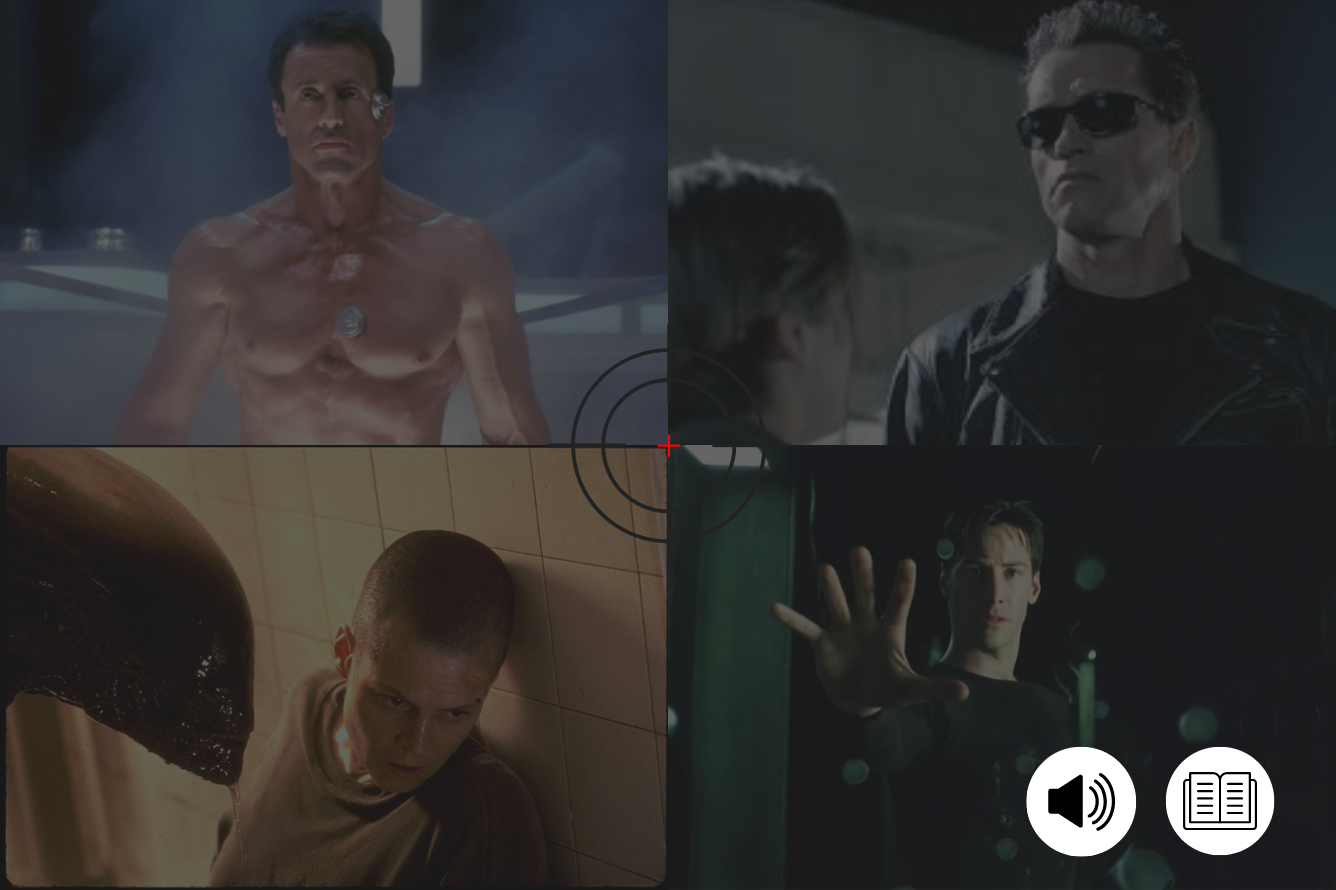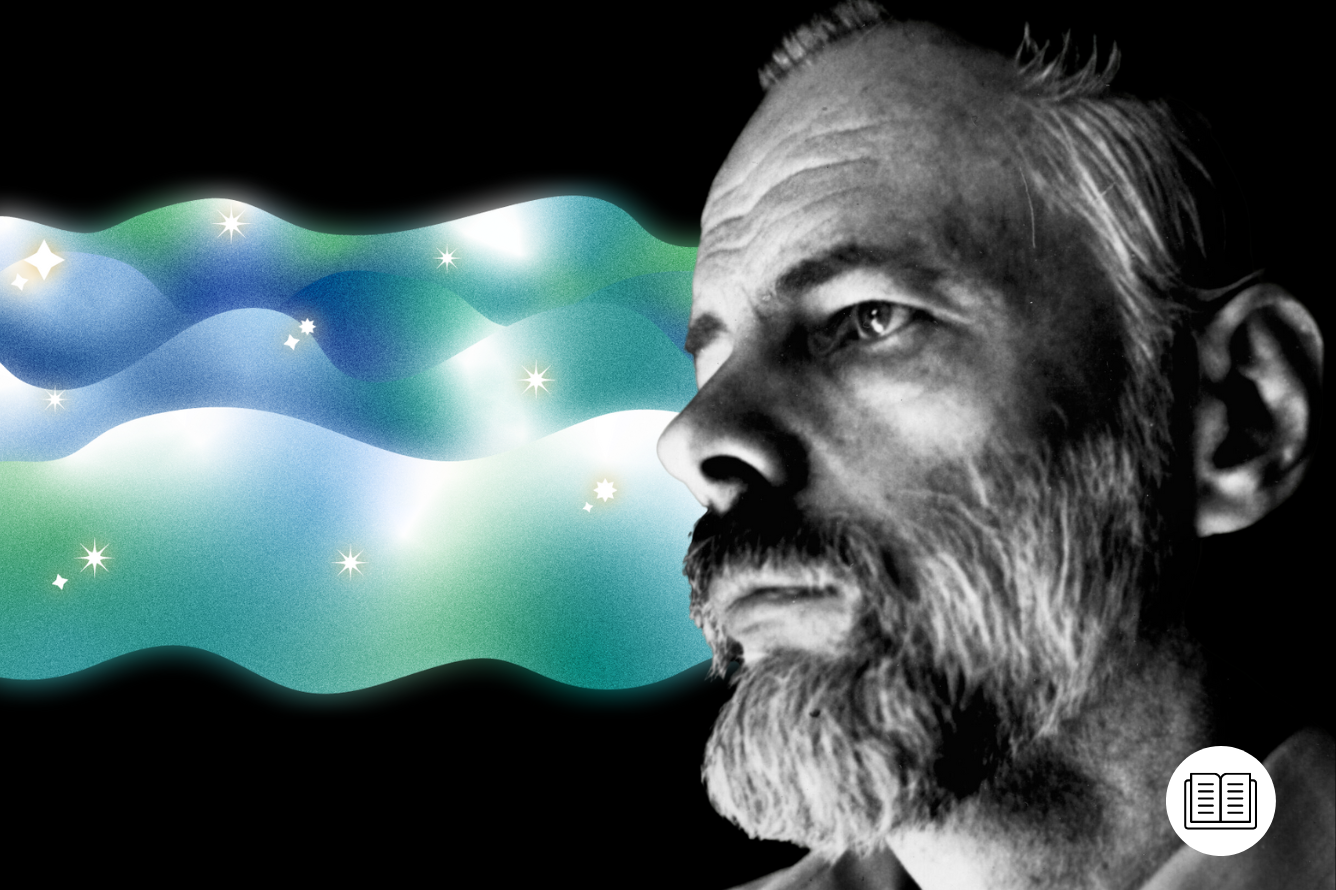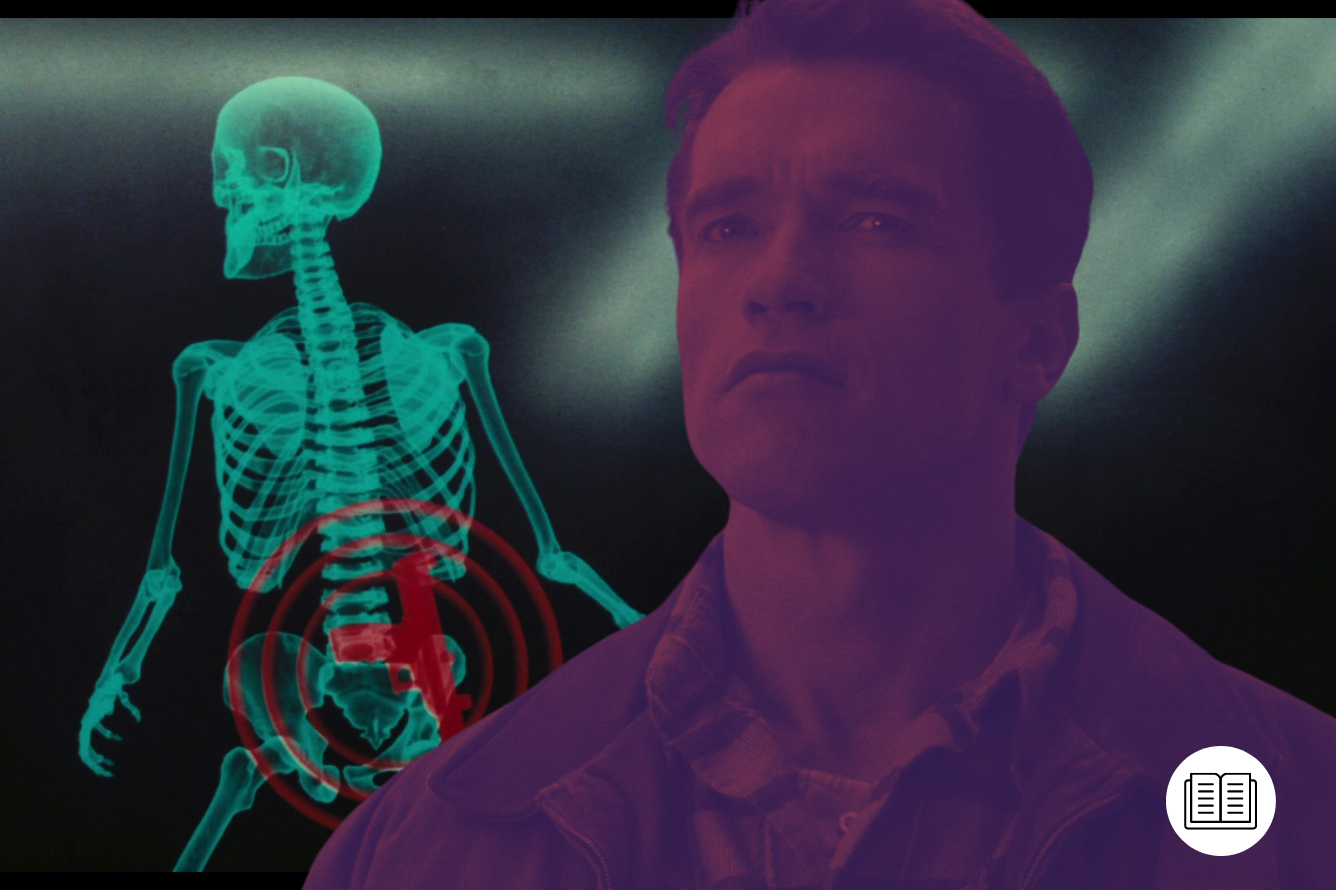You can also listen to Last Action Heroes: How 1990s Blockbusters Swapped Thugs for Thinkers on Apple Podcasts, Google Podcasts, Spotify, or RSS Feed.
Science fiction stories have always mirrored their own eras, their societal or cultural fears and anxieties, the potential of technological advancement. They’re a time capsule as much as they are a vision of the future, and few decades offer as rapid a change on screen as the 1990s.
The aftermath of the power shifts in 1989 sparked waves of revolution across the globe, including the fall of the Berlin Wall and the end of the Cold War. Towards the end of the 90s, the importance of the US military-industrial complex was overshadowed by the tech computer industry as it grew in power and scale. The landscape was changing, and the heroes changed with it. Anyone with a keyboard and internet connection could now change the world. There was no need for big muscles and biceps as the metaphysical took over – you could arm yourself with information while ordering a pizza.
That shift can clearly be seen in Hollywood’s blockbuster heroes. They transformed in appearance and their tech tapped into the way people had started to use the internet to challenge the status quo. The rebellion against the cold-hard capitalism of the Reagan/Bush administrations can be seen in the anti-establishment figures presented in the 1990s. Heroes were afforded the power to question authority and enact change through a combination of brute force and selfless acts. The need for a certain type of machismo dwindled and was satirized on numerous occasions, and the cyber-hero movie even got the green light from a major studio.
The internet offered a place where reality could literally be manipulated and identity was anonymous or fluid. The way we lived our lives was changing and sci-fi films explored not only the psychological impact of the fabric of reality coming apart but the way the internet could be integral to acts of rebellion against the status quo.
1990-1992: The Last Action Heroes
Arnold Schwarzenegger was undeniably the go-to sci-fi action star in the early 90s and his five-time Mr. Universe-winning frame was utilized by two major directors in very different ways at the start of the decade.
In the summer of 1990, Paul Verhoeven’s ultra-violent adaptation of Philip K. Dick’s We Can Remember It For You Wholesale was released as Total Recall. Arnie plays construction worker Quaid, whose belief in the structure of reality begins to dissolve when his memories suggest he has lived an entirely different life. His recurring nightmares place him on Mars as a secret agent and when he enters into a VR simulation that places him in that very scenario it leads him to question his whole existence.
Verhoeven has always been ahead of his time and Total Recall’s themes would dominate the Hollywood sci-fi action blockbuster in the latter part of the decade. In stark contrast to the one-note early 80s beefcakes he was famous for, Arnie’s bulging physique is filled with confusion and vulnerability. In reality, there was a shift in his role choices at this point due to his preparation to enter the political arena and his affiliation with Republican President, George H.W. Bush. A heart condition would dictate his workload and role choices later in the decade, but in J. Hoberman’s 1991 Sight & Sound feature Nietzsche Man, Arnie was described as “a man’s man, – or rather a man’s superman, or perhaps the simulation of man’s superman.”
The way Verhoeven’s movie is constructed by continually reconstructing Quaid’s perspective forces the viewer to re-evaluate what they’ve just seen on screen, as the filmmaker fits big ideas into the Hollywood blockbuster mold. A distorted reality is presented about a construction worker who sees beyond the news headlines, uncovers corruption, and brings it all toppling down to define a new world order. It all feeds into the politics of the previous decade with Verhoeven using Arnie’s musclebound, law-abiding persona in an ironic anti-establishment fashion.
Another director who was mastering his craft in this era was James Cameron: the man who launched Arnie into the mainstream in 1984 with The Terminator, and who used the sequel Terminator 2: Judgement Day (1991) to advocate for world peace.
The villain is now a hero (albeit still a robotic killing machine) who learns about humanity and is taught empathy from a young John Connor (Edward Furlong). It’s a film where everyone is searching for their humanity including an incredibly buff Linda Hamilton as Sarah Connor.
Cameron envisioned a softer, kinder male sci-fi action hero and in juxtaposition a wilder, more aggressive female hero. Both evolve over the course of the film as they battle against a common enemy in the form of Skynet’s police-disguised T-1000. Released in the summer of 1991, following the end of the Gulf War, Cameron depicts a world on the brink of a dusty apocalypse.

Universal Soldier (1992) seemed content to continue on where Terminator left off with AI-controlled, cryogenically frozen Vietnam soldiers reanimated in the present day. Jean Claude Van Damme plays the hero who begins to suffer PTSD-induced flashbacks after a malfunction, teaming up with journalist Veronica (Ally Walker as a comedic side-kick) to defeat his sadistic government-sanctioned comrade (Dolph Lundgren).
Again, you can see the vulnerability trickling out from the beefcake outer shell, with the film’s themes of trauma, national shame and the ravages of war told via the hero’s narrative. Yet still, the hero walks around buck-naked and cock-sure, showing off his powerful physique and quite literally flaunting his virility. To save the day he sleeps with the journalist and engages in an elongated kickboxing fight. It’s pure sex and violence for the most part, that offers its hero the sweet denouement of a safe return home.
Sigourney Weaver’s Ellen Ripley is a bona fide iconic hero born in the 1980s and resuscitated as a martyr in David Fincher’s Alien 3 (1992). Over the 90s Ripley appeared in two Alien films and each time she evolved and mutated to tie in with contemporary issues. This is the one where Ripley shaves her head, is impregnated by the alien, and dies at the end. Pointedly, there are hardly any guns, in clear juxtaposition to Cameron’s Aliens (1986), but there’s still lots of blood and guts flying about.
In the year when Tom Hanks won the Oscar for his performance as a man who is diagnosed with HIV and fights for his rights as his body is ravaged by the AIDS virus in Philadelphia (1993), the critics tied Ripley’s battle for survival to the disease. Renowned critic Philip Strick described this incarnation of Ripley as “a psychotic, at war with the poison inside her” in his S&S review. Fellow S&S critic Amy Taubin also acknowledged the AIDS crisis and abortion rights as integral to understanding the heroine’s eventual sacrifice, stating:
“By choosing to hurl herself over the brink, rather than bend to the will of the state, the hero guarantees her transformation from woman to myth.”
On reflection Ripley is reeling from grief from the death of her crew while also forming an alliance with a gay character, illustrating the film’s stance against homophobia. The conservative male anxieties about the nuclear family central to the Alien films from the previous decade are swapped to show Ripley’s POV, as she attempts to navigate dangerous territory inhabited by religious, celibate male prisoners convicted of rape and murder. It’s a startling depiction of how the female body is viewed and debated in society and the political arena.
In an interview published in Imagi-Movies Magazine, Fincher explained his desire to depart from the 1980s depiction of this character:
“The idea was not to make a whiz-bang, shoot ‘em up, but to deal with this character. Let’s put a 40-year-old woman in outer space, not an underwear-clad victim like in the first Alien.”
He viewed the Alien franchise as a reaction to the ‘yuppie ideal’ and capitalism, and he depicted Ripley as a progressive feminist hero for the times. At the heart of the character, he explained is her martyrdom: “Sacrifice, the idea that sacrifice was a noble, capitalist alternative. We’ve come full circle and realized that selflessness is as important as selfishness in order to survive.”
That change was reflected in the political mood of the time. 1993 marked the switch to a Democratic government and the presidency of Bill Clinton which lasted into the new millennium. It also marked the end of Arnie’s seven-year unbroken reign as one of the top ten highest-grossing stars at the US box office.









